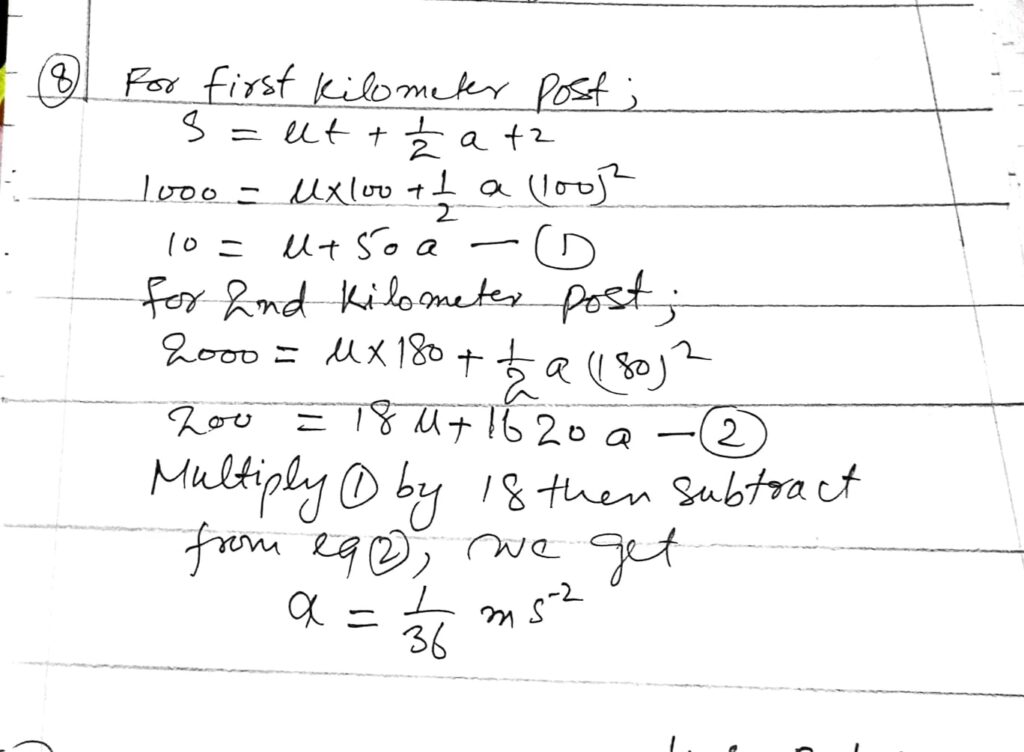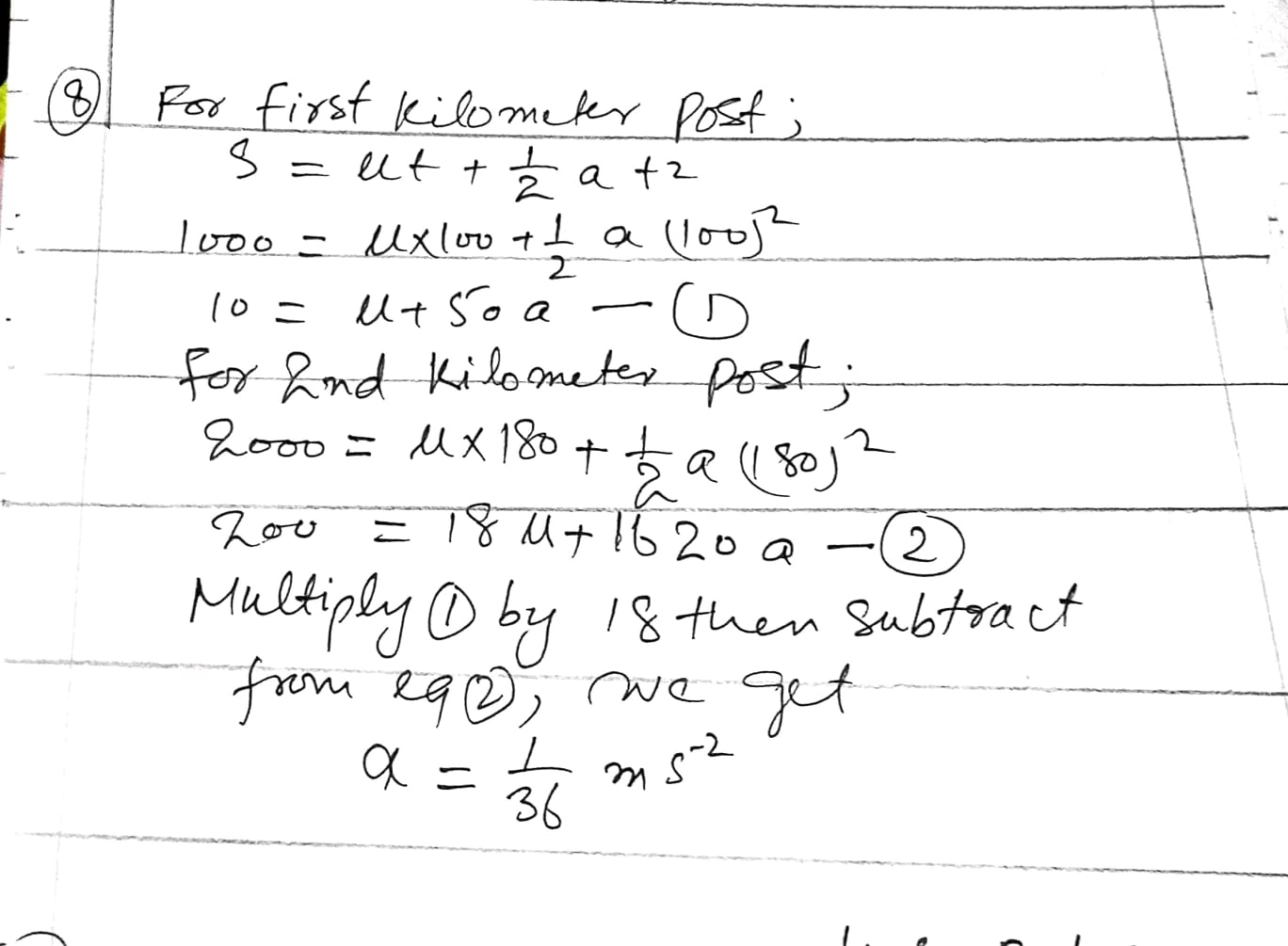Title: Downhill Dynamics: Unraveling Cyclist’s Acceleration: A cyclist is free-wheeling down a long straight hill. The times between passing successive kilometre posts are 100 seconds and 80 seconds…..
Amidst the scenic descent down a long, straight hill, our numerical narrative unfolds as a cyclist embraces the thrill of free-wheeling. The journey is marked by successive kilometre posts, with intervals between them acting as clues to the cyclist’s dynamic experience. In the realm of constant acceleration, the quest is to unveil the magnitude of this acceleration, a critical insight into the cyclist’s downhill adventure
Douglas Quadling Mechanics1 Exercise1D Q8
A cyclist is free-wheeling down a long straight hill. The times between passing successive kilometre posts are 100 seconds and 80 seconds.
.

Scope : Dynamics of Cyclist’s Descent
1. Introduction:
A cyclist is free-wheeling down a long straight hill. The times between passing successive kilometre posts are 100 seconds and 80 seconds…..
- The scenario involves a cyclist free-wheeling down a long, straight hill, marked by successive kilometre posts with varying time intervals between them.
2. Scenario Description:
- The primary focus is on determining the acceleration of the cyclist, a key parameter reflecting the dynamic interplay between the descent and the constant acceleration.
3. Objectives:
- The fundamental goal is to calculate the acceleration of the cyclist, providing insights into the forces governing the downhill journey.
4. Significance:
- Understanding the cyclist’s acceleration underlines the broader comprehension of free-wheeling dynamics and the consistent forces shaping the descent.
5. Exploration Focus:
- The numerical inquiry centers on analyzing the relationship between time intervals, distance markers, and acceleration, offering a glimpse into the forces propelling the cyclist downhill.
6. Physics of Motion:
- The exploration draws on fundamental principles of physics, particularly those related to constant acceleration, to model the cyclist’s descent.
7. Downhill Dynamics:
- The scenario involves complexities related to the dynamics of free-wheeling downhill, necessitating an analysis of time intervals and their impact on the cyclist’s acceleration.
8. Practical Application:
- Findings contribute to the practical understanding of forces at play in downhill cycling, providing real-world implications for optimizing cyclist safety and control during descents.
Conclusion:
A cyclist is free-wheeling down a long straight hill. The times between passing successive kilometre posts are 100 seconds and 80 seconds….
- The numerical investigation promises to unveil the acceleration of the cyclist during the free-wheeling descent, offering valuable insights into the dynamic forces shaping the exhilarating journey down the long, straight hill.

